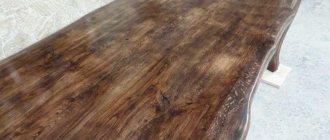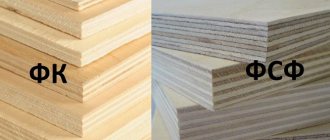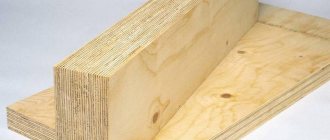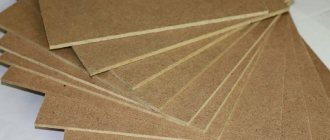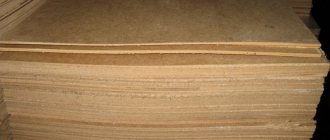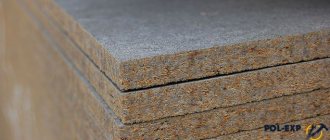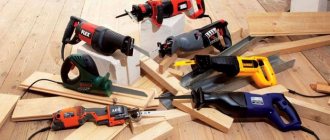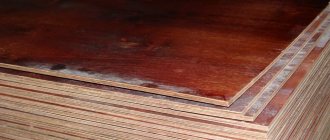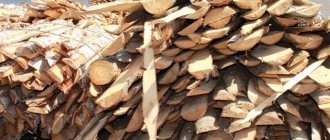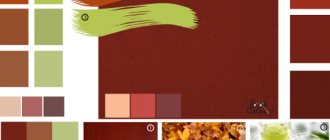The use of lining as a finishing material for internal and external surfaces has been used for a long time. But, unfortunately, until now, not everyone understands what this type of finishing is, and what types of lining exist on the market.
This ignorance is facilitated by the fact that manufacturers are expanding their range every year, offering more advanced and high-tech material.
To dispel all the myths and confirm the known information, it is worth independently studying the main aspects that relate to the choice of lining.
Main advantages
Naturalness and environmental safety. The panels are made only from natural materials, deciduous wood. This ensures the purity of the material and its safety for human health.
To be sure that the source material for production grew in environmentally friendly places, you must ask the seller for appropriate quality certificates for the product.
Aesthetic appeal. The unique and never repeating pattern of wood allows you to create a very beautiful finishing material. The variety of shades and color solutions allows designers to actively use it in their projects. With the help of such finishing material, you can not only change the interior of living rooms, but also make the facade of absolutely any building more attractive.
Durability. Due to the fact that the lining sheets are well impregnated with various protective compounds, the resulting surface will last for decades. The sheets fit together so tightly when laid with each other that the result is a very durable surface that well protects external or internal walls from external factors. This allows you to create the most favorable microclimate for life in the house.
Easy to install. Laying is accessible even to those who understand absolutely nothing about construction. The ease of installation is very attractive to the consumer, since by spending a little time learning the basic rules for decorating walls with clapboards on your own, you can save a significant amount of money on paying qualified workers.
A good way to soundproof. When laying the lining, a small air gap is created between its surface and the wall of the house, which prevents the penetration of extraneous sounds and ensures silence in the house.
Affordable pricing policy. The cost of lining varies over a fairly wide range, which allows everyone to choose the most cost-effective option. It is also worth noting that installation does not require thorough preparatory work for the base, which helps reduce the cost of finishing work.
Calculation of the cost of finishing
Let's consider a simple option:
- To decorate a 4x5x2m room, you need (5x2x2+4x2x2) m2 of a certain type of lining (take, for example, wooden). 36m2 of heavy lining requires a strong frame made of timber 3x3cm or more long, 5m x 4m x 5 horizontal frame levels (every 40cm from the floor level) = 100 m of timber.
In addition, fasteners: dowels plus self-tapping screws for timber (at least 100 pairs per 100m), plus fastening of the lining to the frame (number of sheets, depending on the width, for example, 10 cm) x 5 levels of the frame. A wall 5m long and 2m high will require (5/0.1) x 5 levels of frame = 250 mounting brackets. For all walls of the room this quantity will be equal to 250x2+200x2 = 900 pieces.
By studying prices on the trading platform, you can calculate the estimated cost of repairs. Added to this is the cost of hiring workers if necessary. If the resulting number does not match the budget, you should think about choosing a different type of raw material. MDF boards are 30-50% cheaper than wood boards. Plastic lining is also 40% more profitable. A metal frame can cost more than a wooden beam; the method of fastening the lining also varies from cheap, but short-lived, to durable, but with a frankly extortionate price.
An additional price will have to be paid for varnishes, antiseptics for the lining, leveling, and finishing primer of the walls. For more complex types of repairs (with insulation, installation of sound insulation, etc.), the price will include preparatory work, material, installation of these structures.
Materials for the production of lining and their characteristics
As a rule, depending on the main material used in the production of lining, it is divided into plastic and wooden. Each of them has its own individual characteristics and application features.
Plastic lining
Lining made of plastic is one of the types of polyvinyl chloride panels. This synthetic material has a fairly diverse decorative appearance. But it absolutely cannot withstand even minor mechanical impacts. The advantages of plastic lining include:
- absolute moisture resistance. The panels are not susceptible to the formation of mold or mildew, the plastic does not rot and is not destroyed by prolonged exposure to moisture;
- low cost. As a rule, plastic panels are much cheaper than panels made of wood;
- variety of color solutions. During the production process, plastic can acquire absolutely any colors and shades, which allows you to diversify the range of plastic lining.
Wooden lining
Lining made of wood is more durable and undoubtedly attracts with its naturalness. But at the same time, we should not forget about some features of its application:
- like any wood, such lining requires careful treatment against fungus, mold, and moisture. Based on these features, wooden lining should not be used to cover walls in the bathroom and other rooms with high humidity;
- Do not forget that wooden panels are a very flammable material;
Attention! Anti-pyretic impregnation of walls decorated with wooden panels should be carried out every year. - the cost of finishing materials made of wood is usually much more expensive than others.
But, despite some shortcomings, the natural beauty of wood and the amazing indoor microclimate that only wood can create cannot leave many consumers indifferent.
Types of plastic and wooden linings
Lining - panel. It features a smooth and perfectly flat surface. The thickness of the material allows the panels not to deform even under strong mechanical stress. The lining attracts with its durability and uniquely beautiful pattern of the wood from which it is made.
Block house. In terms of its technical characteristics, such a panel is very similar to wall beams. The difference is that the surface of the block house panels has a rounded shape.
Eurolining. Allows you to create especially strong surfaces thanks to longer tenons and deep grooves in the locking connection of parts.
American. This type of panels is mounted with an overlap, which allows you to create surfaces that are most resistant to external aggressive manifestations.
Peasant woman. Its installation allows you to create perfectly smooth surfaces, with virtually no visible seams or joints. It is usually used to decorate the ceiling.
Depending on the size and method of connection, the lining is divided into seam and seamless.
To decorate surfaces inside the house, as a rule, a suture option is used. It is thinner and not as wide as the seamless option, allowing it to be sheathed on any structure.
The seamless type of material is wider and thicker, but due to the variety of colors, it is actively used for covering wall surfaces in bathrooms, hallways, balconies, kitchens, etc.
There is old clapboard on the walls. How to clean it? Restore original color?
To do this, you can use a flat pumice stone or an abrasive wheel. As a result of sanding, the shalevka loses all its protective properties, which means it must be coated with an appropriate antiseptic solution, which not only plays a protective role, but also preserves all the properties of the paint.
Once the preparation is complete, the paint can be coated.
If you use classic paint, it will preserve the original upholstery pattern and will not require additional finishing. If the coating is opaque and completely hides the wood grain, to achieve an attractive and original look, you should take care of additional decorations, for example, elements for decorating windows and floors.
Classification of wooden lining
When buying wooden lining, it is worth understanding what class a particular product belongs to. Depending on the quality of the raw materials, there are four main types of wooden lining:
- Only those panels whose surface does not contain any flaws, knots or other defects can have a premium class.
- “A” class is assigned to lining, in the production of which the core of the timber is not used, and on the surface 1.5 meters long there are no defects of more than one example (knot, crack, chip).
- “B” class provides for the presence of defects in the amount of four elements per 1.5 linear meters of lining.
- “C” class refers to those materials that not only have various external surface imperfections, but also differ in color along the entire length of the material.
Dimensions
When choosing a lining, a big role is given to its size - the length, width and thickness of the board. These parameters depend on both the strength characteristics and the design of the lined surface. Most often, elements of standard sizes are used.
In particular, the European standard recommends a lining with a width of 88 mm (plus a tenon of 8 m), a thickness of 12.5 mm and a length of 1.2 to 4.5 m. At the same time, there is a wide selection of mark sizes on sale. Thus, the lining is produced in lengths from 30 cm to 6 m (steps are 10 cm). Thickness can vary from 12 to 25 mm. The tables below provide more detailed material sizing parameters.
For interior work, wooden lining with a thickness of 13 mm to 16 mm . For external work, lining (popularly called collective farmer) with a thickness of 16 mm to 25 mm .
Where is lining used?
The purpose of the material directly depends on its type and class. For example, panels of coniferous wood are excellent for interior decoration. If you plan to cover the walls of the bathroom, then you should pay attention to oak panels.
When choosing paneling for a steam room in a bathhouse, panels made of linden, alder or cedar are good options. Not only do they contain healthy substances released when heated, but they also have an excellent ability to withstand high temperatures and humidity.
Attention! Even with very high heating, shelves made from such panels do not burn.
For external walls, there is no fundamental importance in choosing the type of wood, the main thing is that it is treated with protective compounds against fire and water.
If the material is used for interior decoration of a house, special attention should be paid to matching the color of all panels used.
What are they made of?
Lining can be made from almost any type of wood, but this is reflected in its quality and basic characteristics. The scope of use of the material also depends on the raw materials used. The following types of lining differ according to the type of wood.
We recommend: Terrace plates: where can they be mounted, why clinker is so durable and what are the beneficial properties of slabs made from it
Coniferous wood
Its specific feature is its high content of resins and essential oils . On the one hand, they interfere with the development of fungi, but at high temperatures they are dangerous for the human body. Taking this into account, coniferous species cannot be used in steam rooms , and they are most widely used for the external cladding of buildings.
Most often, lining is made from the following coniferous trees:
- Spruce. Advantages – low cost; softness, allowing easy rounding of shapes; beautiful texture; low roughness. The main disadvantage is increased hygroscopicity.
- Pine. It is considered the most suitable material for budget-class lining. Disadvantages include high resin content and vulnerability to scratches.
- Larch. This material has high strength and minimal hygroscopicity, attractive texture and resistance to rotting. The use is limited by the high price.
- Cedar. It has a special aroma that has a beneficial effect on the nervous system. It is able to repel insects. The disadvantage is scarcity and increased cost.
Hardwood
Compared to conifers, their resins are not harmful to humans, which allows them to be used in bath conditions.
It is characterized by reduced thermal conductivity . The following types of wood are used:
- Linden. The main disadvantage is the gradual darkening with use and the corresponding loss of external gloss.
- Alder. It can be used in damp areas. It has an original, attractive texture. The main disadvantage is reduced durability.
- Oak. Oak lining belongs to the elite class. It has virtually no flaws and has an excellent appearance. The only limiting factor is the price.
Exotic
Valuable, exotic wood species belonging to the mahogany are used for the manufacture of high-quality elite-class lining. It has a very high cost, but has an incomparable appearance, a special shade, high durability and strength.
Particularly notable are varieties such as hemlock or hemlock and abashi . The latter tropical plant is distinguished by its peculiar color with a lemon-yellow or whitish tint.
The wood base of the lining determines its properties and decorativeness. Which type to choose depends on the purpose of the board, financial capabilities and needs.
